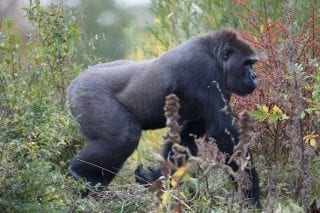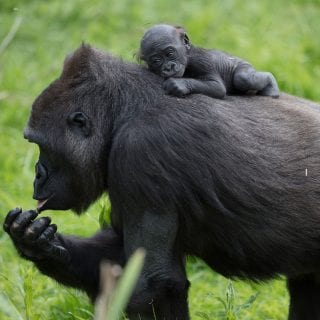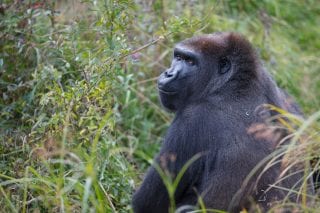Fun Facts
Piggy-backs
A baby gorilla can cling to the fur on his mother’s back when moving through the forest, leaving the mother’s hands free for walking.
Silverback
The adult male who leads the troop is known as the ‘silverback’ because he has grey hair on his back. He is responsible for the safety and wellbeing of the members of his troop. The silverback makes all the decisions, such as where the troop will travel for food each day, when they will stop to eat or rest, and where they will spend the night.
Nose-prints
No two gorilla noses are alike. The ‘nose-prints’ of gorillas are as distinctive as human fingerprints — no two are identical.
Largest Primate
Gorillas are the largest of all primates, the group of animals that includes lemurs, monkeys, orangutans, chimpanzees, and humans.



